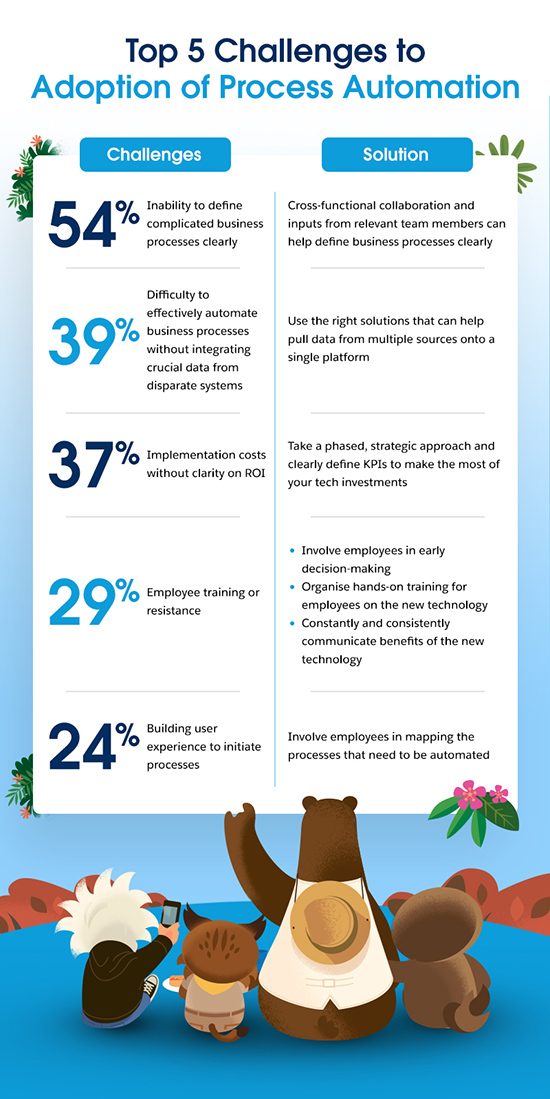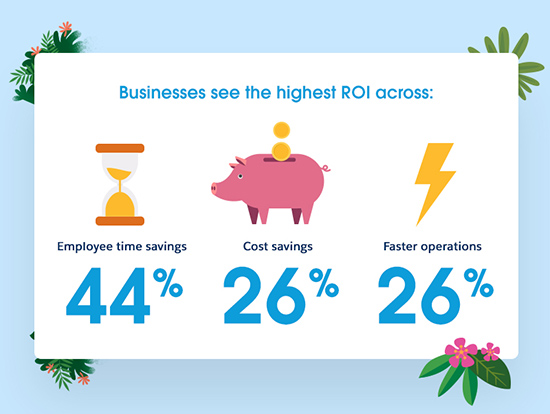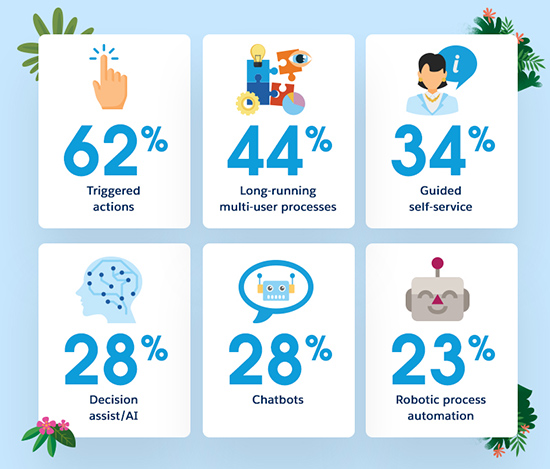When was the last time you had to wait for the confirmation email of an online transaction? Or was an acknowledgement to submission of onboarding documents delayed by the firm you just joined? We bet you don’t even remember.
Automatic email responses are just one example of process automation, and if you look around, you will find many such instances.
Using technologies like Artificial Intelligence (AI) and Machine Learning (ML), process automation helps companies automate repetitive tasks and scale complex processes. This means humans can focus on what they do best: strategise to accelerate business growth. But to maximise the impact of technology, it is important to align it with business goals.
This is where IT leaders today play a pivotal role - by getting a deeper understanding of the organisation's business needs and aligning those to digital transformation goals and outcomes.
Challenges to adopting process automation extensively
Salesforce, along with Pulse, surveyed 100 global IT leaders to understand how they are prioritising process automation to improve business performance. 53% of the respondents said that departments generating the highest ROI are currently investing in process automation.
The survey also found that IT and engineering leaders face several barriers that prevent them from automating more processes. Most significantly, they struggle with mapping complex processes (54%), integrations (39%), and implementation costs (37%).
Here are the key challenges IT leaders face to adopting process automation, according to the report. While outlining these challenges, we also looked at some solutions that could help you overcome these hurdles.

Why process automation is a clear winner


Nearly 54% of the organisations surveyed spent more than $250,000 on process automation in 2020. And almost 43% of these organisations plan to increase their process automation spend by 6-10% over the next 12 months.
So, what’s stopping you from exploring the benefits of process automation? As business environments continue to change, process automation can help companies optimise output while increasing their agility.
Salesforce makes process automation simple and cost-effective
IT leaders can lead their organisations on a digital-first path to success with the right tools and technology. Download the report - IT Leaders Fueling Productivity with Process Automation – for more insights from global IT leaders.
Also read:
How IT Leaders are Orchestrating the Improved Employee Experience
Why Startups should be Hyper-automating to Address their Business Needs
Accelerating Digital Transformation with Rapid App Development in Low-Code Environments
Infographic: How Low-Code App Development Enables Business Agility in Times of Change




